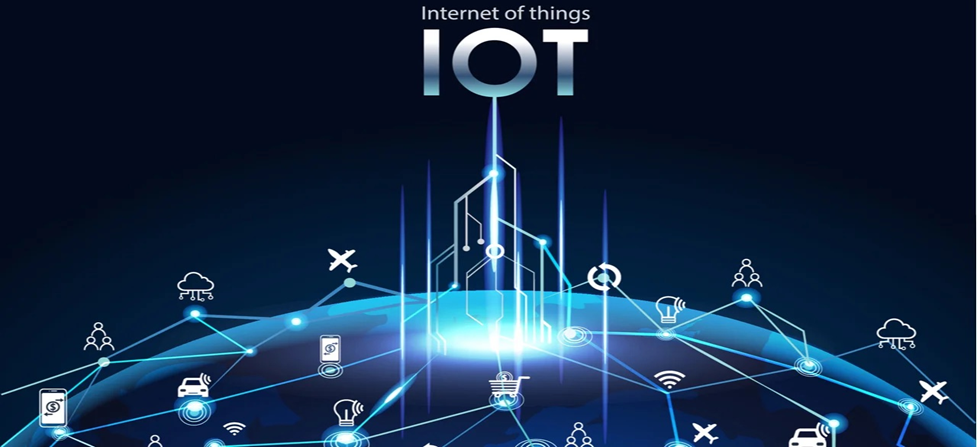Internet of Things

INTERNET OF THINGS : The Internet of things (IoT) describes devices with sensors, processing ability, software and other technologies that connect and exchange data with other devices and systems over the Internet or other communications networks The Internet of things electronics, communication, and computer science engineering. “Internet of things” has been considered a misnomer because devices do not need to be connected to the public internet they only need to be connected to a network and be individually addressable.
The field has evolved due to the convergence of multiple technologies, including ubiquitous , and increasingly powerful embedded systems, as well as machine learning. Older fields of embedded systems, wireless sensor networks, control systems, automation (including home and building automation), independently and collectively enable the Internet of things. In the consumer market, IoT technology is most synonymous with smart home products, including devices and appliances (lighting fixtures, thermostats home security issues, cameras, and other home appliances) that support one or more common ecosystems and can be controlled via devices associated with that ecosystem, such smartphones and smart speakers. IoT is also used in healthcare systems.
Advantages of Internet of Things:
1.Efficiency and Automation: Streamlined Processes: IoT enables the automation and optimization of various processes, reducing manual intervention and improving overall efficiency. Real-time Monitoring: Continuous monitoring of devices and systems allows for immediate response to issues or changes in conditions.
2.Data Collection and Analysis: Big Data Insights: IoT generates vast amounts of data that can be analyzed to gain valuable insights, helping businesses make informed decisions. Predictive Analytics: Data from IoT devices can be used for predictive modeling, anticipating trends and issues before they occur.
3.Cost Savings: Operational Efficiency: Automation and optimization lead to cost savings in terms of time, energy, and resources. Maintenance Predictions: Predictive maintenance based on IoT data helps reduce downtime and extends the lifespan of equipment.
Disadvantages of Internet of Things:
1. Interoperability Challenges: Lack of Standardization: The absence of universal standards in IoT devices can lead to interoperability issues. Devices from different manufacturers may not communicate seamlessly, hindering the development of a unified IoT ecosystem.
2.Complexity and Cost: Implementation Costs: Deploying IoT systems can be expensive, especially for businesses looking to integrate IoT across various processes. The cost of sensors, communication infrastructure, and data processing can be substantial. Complexity of Integration: Integrating IoT devices into existing systems can be complex. Compatibility issues, retrofitting, and the need for skilled professionals can make the integration process challenging.
3.Security Concerns: Privacy Issues: IoT devices often collect and transmit large amounts of personal data, raising concerns about privacy. Unauthorized access to this data can lead to identity theft or misuse of sensitive information .Cybersecurity Threats: IoT devices are vulnerable to hacking and cyber-attacks. Compromised devices can be used to launch attacks on networks or gather sensitive information.
Applications:
1.consumers:
A growing portion of IoT devices is created for consumer use, including connected vehicles, home automation, wearable technology, connected health, and appliances with remote monitoring capabilities.
2.Home automation:
IoT devices are a part of the larger concept of home automation, which can include lighting, heating and air conditioning, media and security systems and camera systems. Long-term benefits could include energy savings by automatically ensuring lights and electronics are turned off or by making the residents in the home aware of usage. A smart home or automated home could be based on a platform or hubs that control smart devices and appliances.For instance, using Apple’s HomeKit, manufacturers can have their home products and accessories controlled by an application in iOS devices such as the iPhone and the Apple Watch. This could be a dedicated app or iOS native applications such as Siri. This can be demonstrated in the case of Lenovo’s Smart Home Essentials, which is a line of smart home devices that are controlled through Apple’s Home app or Siri without the need for a Wi-Fi bridge. There are also dedicated smart home hubs that are offered as standalone platforms to connect different smart home products. These include the Amazon Echo, Google Home, Apple’s HomePod, and Samsung’s SmartThings Hub. In addition to the commercial systems, there are many non-proprietary, open source ecosystems, including Home Assistant, OpenHAB and Domoticz.
3.Elder care:
One key application of a smart home is to assist the elderly and disabled. These home systems use assistive technology to accommodate an owner’s specific disabilities.Voice control can assist users with sight and mobility limitations while alert systems can be connected directly to cochlear implants worn by hearing-impaired users. They can also be equipped with additional safety features, including sensors that monitor for medical emergencies such as falls or seizures. Smart home technology applied in this way can provide users with more freedom and a higher quality of life.





